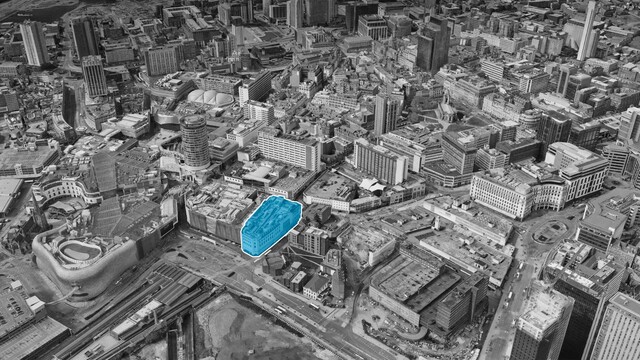Steady as she goes at Derwent
Derwent London’s IFRS NAV nudged up by 1.7% last year to £4.26bn as the REIT remained steady during 2018.
EPRA NAV per share also increased slightly to 3,776p, up from 3,716p at the end of 2017, Derwent reported in its results for the year ended 31 December 2018. EPRA earnings per share jumped by 20% to 113.07p.
The firm’s property portfolio, which includes Soho Place,W1, and the Featherstone Building, EC1, developments slated to start this year, saw an uplift of 6% to £5.2bn from £4.9bn a year earlier.
Derwent London’s IFRS NAV nudged up by 1.7% last year to £4.26bn as the REIT remained steady during 2018.
EPRA NAV per share also increased slightly to 3,776p, up from 3,716p at the end of 2017, Derwent reported in its results for the year ended 31 December 2018. EPRA earnings per share jumped by 20% to 113.07p.
The firm’s property portfolio, which includes Soho Place,W1, and the Featherstone Building, EC1, developments slated to start this year, saw an uplift of 6% to £5.2bn from £4.9bn a year earlier.
Borrowings increased to £914.5m at 31 December 2018 from £730.8m a year earlier after capital expenditure invested in its development projects that also includes the Brunel Building in Paddington, which is now 77% prelet.
Grossing up for leasehold liabilities and netting off cash balances, net debt increased from £657.9m to £956.9m at December 2018. Derwent’s LTV additionally increased from 13.2% in 2017 to 17.2% in 2018.
Capital spend on projects also increased to £187.5m in 2018, but was partially offset by £15.9m of reimbursed expenditure, £7.2m of which was in connection with the Soho Place project.
In 2019, the business said it expected to invest a further £207m in capital expenditure plus £15m of capitalised interest across its portfolio.
Derwent also reported that its cash and undrawn facilities stood at £274m before £250m USPP was drawn in January 2019.
Net rental income remained steady at £161.1m, while mainly due to the lower uplifts on revaluation and disposals, profit before tax fell to £221.6m for the year ended 31 December 2018 against £314.8m in the prior year.
John Burns in his last statement as chief executive of the company he has grown from £1.1m in 1984 to its £3.3bn market cap today, said: “Making any short-term prediction today is difficult with so many major political decisions unresolved.
“Longer term, we remain confident about London’s prospects and its status as a global city. This belief, shared with many other businesses, continues to support occupier demand. Assuming demand is maintained, we expect the London office market will follow a similar pattern to last year so, for 2019, we estimate our ERV growth at +1% to -2%, with stable investment yields. Our strong financial position means that, were London offices to suffer an unexpected downturn, we would be poised to take advantage of any opportunities that might occur.”
To send feedback, e-mail louise.dransfield@egi.co.uk or tweet @DransfieldL or @estatesgazette










